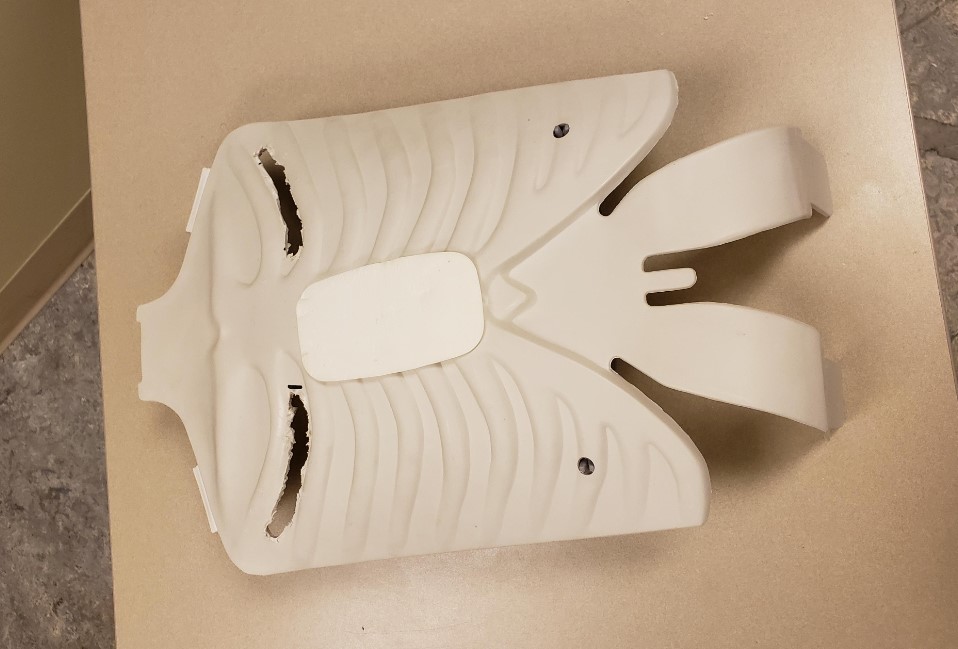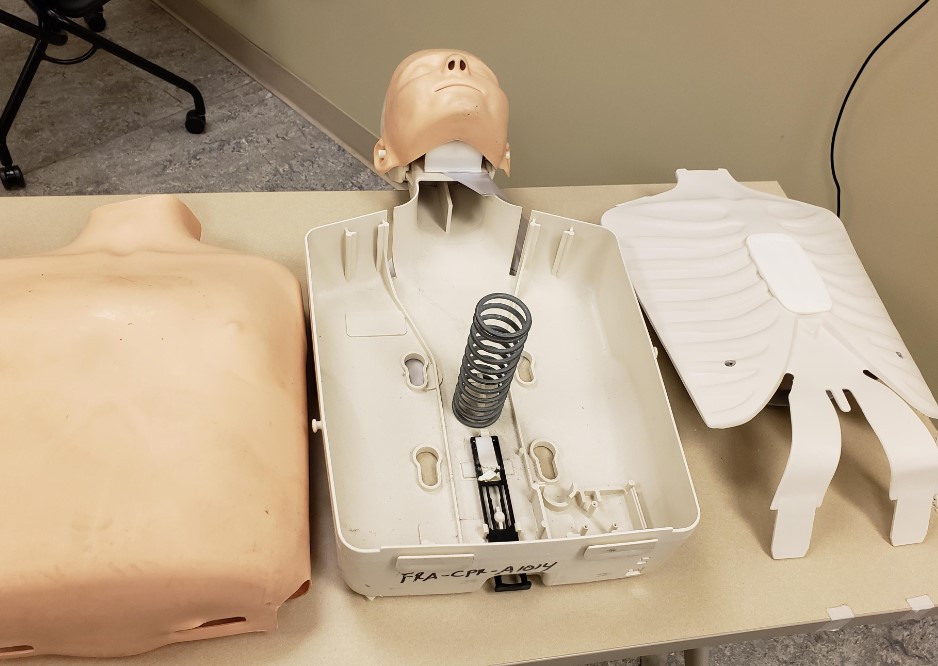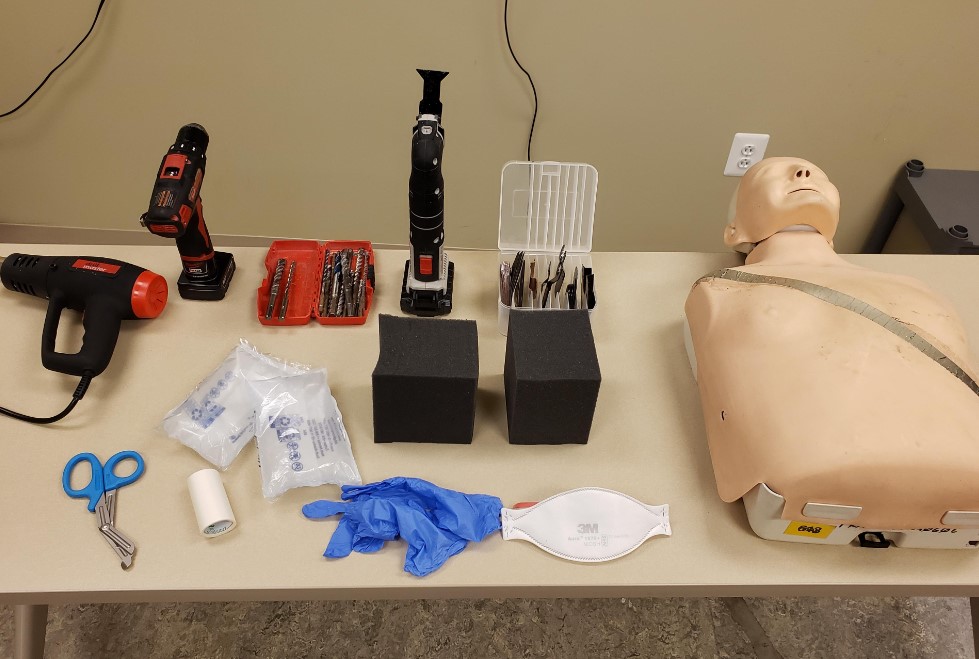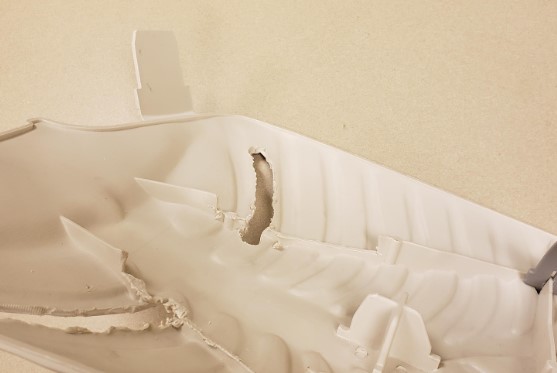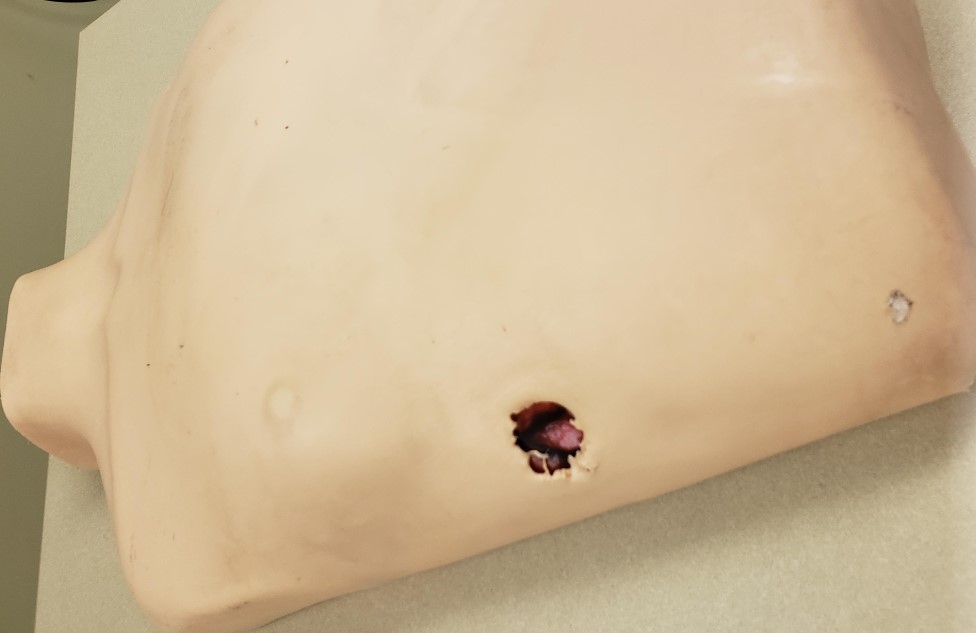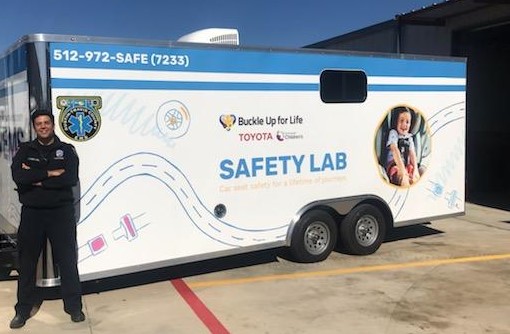ADVERTISEMENT
EMS Week 2020: Keep On Keeping On
Happy EMS Week—especially this year.
As if scripted by Hollywood, this year’s COVID-19 outbreak provided a poignant lead-in to America’s 46th annual salute to its emergency medical providers. As thousands fell ill and society ground to a near-halt in an unprecedented epidemic, EMS providers kept doing what they do: They kept turning up for work, kept answering calls, and kept providing the best possible care despite uncertainty and risk to themselves.
Again this time some took one for the rest of us. The most notable of these were the initial firefighters and police officers quarantined in Kirkland, Wash., but other quarantines and positive diagnoses have followed. To all of you, much gratitude and full and speedy recoveries.
To all of them and the rest of you, let’s stay safe. EMS World is working constantly to bring you the latest and most current information on the COVID-19 outbreak through its dedicated page; please also follow instructions from your medical leadership, local and state authorities, and respected sources like the CDC and WHO.
National EMS Week dates to 1974, when President Gerald Ford authorized a special observation and celebration of the essential work performed by EMS providers every day. Each year the National Association of Emergency Medical Technicians (NAEMT) partners with the American College of Emergency Physicians (ACEP) to lead EMS Week activities.
The diverse nature of EMS is reflected in the week’s five daily themes: education (Monday), safety (Tuesday), EMS for children (Wednesday), save a life (Thursday), and EMS recognition (Friday). The content in this year’s package also reflects those themes. Rather than focus on one story for EMS Recognition, we dedicate this entire issue to you.
That diverse nature means all your regular 9-1-1 calls—from simple falls to massive MIs and everything in between—don’t stop just because a new threat’s grabbing headlines. And oh, yeah, you’ve kept answering those too. So thanks for that also, and enjoy EMS Week—you’ve really earned it this year.
EMS Week: Education
Get Off Your Butt: The Hazards of Sitting
NEAT tips from GMR can improve your overall health
Our metabolism drops while we sit. Studies have shown that just 30 uninterrupted minutes of sitting can reduce your metabolic rate by as much as 90%. That’s true whether you’re in a chair, on your sofa, or in an ambulance.
Studies have also shown that sitting reduces the amount of lipoprotein lipase in the leg muscles. This enzyme pulls triglycerides out of the blood to be used as fuel for muscles. So sitting can lead to an increase in blood triglyceride levels, possibly contributing to cardiac disease.
Long periods of sitting are also associated with declines in HDL (good cholesterol) levels, reductions in insulin sensitivity, and an increase in central adiposity (belly fat). Prolonged sitting leads to tight hip flexors and weakened glutes and hamstrings and can contribute to low-back pain. Sitting itself significantly increases pressure on the lower back and can exacerbate sciatic pain.
Prolonged or frequent periods of sitting are associated with inflammatory markers in the blood. Systemic inflammation is associated with the development of many diseases, including diabetes and cancer.
Even working out for an hour a day on a regular basis doesn’t reverse the impacts of the sedentary time. The benefits achieved by regular exercise are different than the detriments of prolonged sitting. To combat those we need to reduce both the discrete intervals and overall time we spend sitting.
To put it another way, the negative impacts of sedentary life are more about how much we sit than how much we work out. Even just decreasing the amount of time we spend sitting without increasing our workouts will show benefit.
That’s the good news: As little as five minutes of activity interspersed to break up the sitting can disrupt these sedentary metabolic impacts.
NEAT
The acronym NEAT stands for nonexercise activity thermogenesis. It’s the energy we expend on everything that’s not eating, sleeping, or sports. Things like toe tapping, finger drumming, and shoulder rolls contribute to our activity levels. Even fidgeting is a form of NEAT.
James Levine, PhD, encourages bouts of physical activity throughout our day. This activity need not be intense. Standing burns roughly 50 more calories an hour than sitting does. Adding one hour a day of standing can burn 350 extra calories a week without changing anything else. Per Levine, swapping standing for sitting three hours a day for five days a week can burn up to 30,000 extra calories a year, or roughly the equivalent of running 10 marathons.
Sidebar: Incorporating NEAT
Here are some tips for incorporating NEAT into your shift. GMR encourages such methods of keeping employees active:
- Stand whenever possible. Standing increases metabolism over sitting. For a bonus throw in a few toe-raises while standing.
- Fidget.
- Incorporate short stretch sessions into your day, especially the shoulders, back, and hips—areas that can become tight while sitting in an ambulance. Shoulder rolls, stretching arms overhead, arm circles, side stretches, forward bends, back bends, hip flexor stretches, quad stretches, and neck rolls are all helpful for interrupting sitting and decreasing muscle tension.
- If posting near a park, walk outside, climb stairs, do step-ups on a bench, or do a few quick plyometric exercises (squat jumps, jumping lunges, jump rope without the rope, etc.).
- When at the ER, stand or pace in the EMS lounge instead of sitting.
- Incorporate the Kravitz squat into your day. That is, when possible, move in a sit/stand/sit pattern. When you sit down, stand back up again and then sit again, effectively doing a squat. Exercise scientist Len Kravitz, PhD, recommends following the same practice when moving from sitting to standing. He has shown the average person can add 10,000 squats a year into their lives by following this practice. If you feel awkward adopting it, simply incorporate a few sets of air squats throughout your day to achieve similar benefits.
How to incorporate NEAT into your off-duty life:
- Be inefficient—carry your grocery bags in one at a time or do curls with them as you walk inside.
- Park on the outer edges of parking lots and walk farther to your destinations.
- Walk as much as possible during your day.
- While watching TV, stand, pace, or do some other easy activity (squats, sit-ups, stretches, ride an exercise bike).
- Put your computer on a counter and stand rather than sit.
- Take the stairs whenever possible.
- Wash dishes by hand, then dry and put them away instead of just loading the dishwasher.
- Play with your kids or dog.
- Pace or walk while talking on the phone.
- Avoid drive-throughs and walk inside to order.
Rhonda Kelly, RN, is national director of GMR Life.
EMS Week: Education
Repurposing Manikins: Making ‘Trauma Mamas’
Don’t toss that old Little Anne—refashion it into a trauma manikin
Now that the American Heart Association is requiring the use of instrumented directive feedback devices in all adult CPR training, what do we do with our old Little Anne manikins?
Rather than wasting thousands of dollars, the EMS Training Section of the Fairfax County (Va.) Fire and Rescue Department has come up with a way to repurpose its Little Annes into trauma manikins that allow trainees to perform chest decompressions, place occlusive dressings over gunshot or stab wounds, and drop in nasopharyngeal airways. Here is the procedure we developed.
Suggested Materials
- Decommissioned “Anne” CPR simulator
- Heat gun
- Drill with bits of 1/2” and 1/4” (for ribs) and 3/8” (for nostrils)
- Scissors/shears
- Knife
- Jigsaw or Dremel saw
- Tape
- Picture of wound/red paper for wound simulation
- Mask
- ESS Eye Pro goggles
- Gloves
Procedure
Disassemble the Anne CPR simulator and remove the plastic bag that simulates the airway and lungs.
To create the slits on the second intercostal space, use the heat gun to soften the plastic for 10–20 seconds and drill 5–6 holes using the 1/2” bit. If you do not have a heat gun, you may use the 1/4” bit to start the hole and then follow up with the 1/2” bit to expand it.
After making the drill holes, take the scissors/shears or Dremel or jigsaw and cut along the outline of the second intercostal space, completely removing all the plastic in that space. If you have a powerful enough saw and blade, you may be able to bypass the drilling portion and go straight to cutting the outline of the space. The heat gun is useful in softening the hard plastic to make cutting and drilling easier. Be mindful of how long you heat the area.
On the inside of the rib cage, remove 4–5 inches of the plastic running vertically along the ribs. This creates a pocket for the plastic air sacs to fit in without the pressure of the hard plastic pressing down and possibly damaging or popping the sacs.
To remove the plastic use the heat gun to soften it. Use the Dremel or jigsaw to cut from the first rib to the fourth (or as needed depending the plastic air sac size) and remove the plastic. Depending how good your saw is, you may use the heat gun to melt/round any jagged edges from the rib cuts to provide a smoother texture.
To create the wound simply take the CPR simulator skin and cut about a centimeter-size slit. From there make several cuts from the slit mimicking the rays off an amateur drawing of a sun.
After making the cuts use a nonflammable object (I used the widest and longest drill bit) to stick through the slit and simultaneously use the heat gun to heat the opening, rotating carefully around, slightly widening the opening to its desired diameter. Once you’ve made your desired wound size, you can tape on the opposite side a picture of a wound or use moulage to simulate different kinds of wounds that would need an occlusive dressing.
To simulate a tension pneumothorax, we used air sacs you can easily retrieve from packaging products. Covering the side up with medical tape isn’t required, but I found it helped with protecting the plastic from damage from the modified changes from the rib cage.
To hold the air sacs up we used hard foam cut into 5x5 cubes. Anything firm can be used if foam isn’t available, but the size should be as close to 5x5 as possible to create the appropriate prop to support the plastic air sac.
Maillim Empie is a firefighter and EMT with Fairfax County (Va.) Fire and Rescue.
EMS Week: Safety
Alerting EMS to the Silent Killer
New technology will protect responders in Detroit
Every year carbon monoxide (CO) poisoning is responsible for 50,000 emergency room visits and 1,200 deaths in the United States. According to the National Carbon Monoxide Awareness Association (NCOAA), the true total may be even higher due to cases unrecognized and undiagnosed—thanks to the odorless, tasteless, and invisible nature of CO gas. It doesn’t help that many of the symptoms caused by CO poisoning—dizziness, dull headache, nausea/vomiting, and shortness of breath—can appear to be the flu and other common illnesses.
Here’s the diagnostic challenge: If an EMT isn’t looking for CO poisoning and there are no CO alarms going off at the scene, then there’s no reason to expect CO poisoning.
Yet according to the NCOAA, such poisonings do occur. The reason: The UL (Underwriters Laboratories) standard for CO detectors allows 70 ppm of CO to exist within the detector’s range for 60–240 minutes before an alarm is sounded…even though the EPA limit for eight hours of CO exposure is just 9 ppm. (The UL standard tolerates 150 ppm for up to 50 minutes and 400 ppm for up to 10 minutes before the alarm sounds.)
The fact that legal CO detectors do not alert their users to low levels of persistent CO has serious ramifications. Homeowners can develop serious health issues due to ongoing CO poisoning that no one is aware of because their alarms don’t go off. (Homes without alarms are at even more risk.)
A case in point: NCOAA President/founder Charon McNabb personally experienced 11 years of chronic low-level CO poisoning due to improperly vented home appliances without anyone being aware of the cause.
“The CO leaks in my home were undetected by technicians, while my CO poisoning was repeatedly misdiagnosed by doctors,” McNabb says. “I was misdiagnosed as having bronchitis, chronic obstructive pulmonary disease, traumatic brain injury, and Alzheimer’s. They prescribed medications to manage my symptoms; at one point I was on 11.”
Today NCOAA and its volunteers—many of whom also have been affected by low-level CO poisoning—are working on several state and national projects aimed at reducing CO exposures, including a project involving EMTs in Detroit.
Sources to Watch For
Precisely because it is impossible for humans to physically detect CO in the air, this gas has been rightly termed the “silent killer.” This is why EMTs can find themselves responding to poisoning incidents without knowing the gas is present. All they see are the ill, unconscious, and/or asphyxiated victims, without knowing they’re now breathing in the same poison.
There are some clues to watch out for: CO is generated whenever fuel burns. So if there’s a fireplace, gas heater, barbeque, or some other fuel-burning device in an enclosed space, it may have vented CO and poisoned the inhabitants without them knowing it. Gas-burning stoves, ovens, and water heaters can also vent CO into a home if their exhaust pipes are leaking or blocked.
Detroit Gets Serious
In a bid to address CO poisoning in Detroit, NCOAA has partnered with the Detroit Public Safety Foundation (DPSF) and equipment manufacturers Molex and coVita to help EMTs detect and diagnose these cases at incident scenes. The DPSF works with the city’s fire and police departments to improve the health and safety of Detroit residents through better equipment, enhanced staff training, and community outreach. Molex and coVita are providing equipment that allows Detroit’s EMTs to detect and quickly diagnose CO poisoning at incident scenes.
Molex makes the Sensorcon line of personal wearable CO detectors. These units come with built-in electrochemical sensors to detect CO near the wearer, with an alarm activated whenever this occurs. The standard Sensorcon has a visual and audio alarm, while more advanced models have vibrating alarms as well. All of them have a measuring range between 0–500 ppm of CO, with a resolution of 1 ppm.
CoVita’s ToxCO is a handheld breath monitor that can detect CO in the patient’s blood. It does this through either a breathalyzer-style tube the patient blows into or a wearable facemask, making it a faster alternative to drawing blood and testing it in the lab. The ToxCO can also measure CO in ambient air.
“Using these devices together, EMTs can protect themselves against CO exposure and provide prompt treatment to CO poisoning victims,” says McNabb. “Given that CO poisoning symptoms can mimic those of other illnesses such as the flu, being able to test patients properly can be a real lifesaver.”
“The people in Detroit, and also the city of Auburn Hills in California, are supportive of NCOAA’s efforts and on board with us,” adds Dennis O’Meara, NCOAA’s director of operations. “They want to address the problem of CO poisoning at the EMS level. Our hope is that other jurisdictions will follow suit, allowing us to take proper CO poisoning detection and diagnosis to the national level.”
The bottom line: With 1,200 confirmed U.S. deaths annually and many more suspected, CO poisoning is a threat first responders need to take seriously. The pioneering work of the NCOAA and its partners is not just to be applauded but actively joined by EMS, fire, and police departments across the country. Learn more at www.ncoaa.us.
James Careless is a freelance writer and frequent contributor to EMS World.
EMS Week: Children
Lab Provides Passenger Safety Education
Austin-Travis County EMS is hosting the effort to keep kids safer in cars
Installing a car seat isn’t always the easiest task to master. In fact, three of four car seats in the U.S. are not installed properly. We know, however, that education and resources can make a positive impact in helping more families get it right. One of the challenges is connecting parents and caregivers with customized opportunities to learn about child passenger safety. Now community members in Austin, Tex., and the surrounding areas can have education come to them.
Austin is home to the first Buckle Up for Life Safety Lab, a new mobile interactive experience designed to educate families on child passenger safety. The program is funded through a grant to Austin-Travis County EMS (ATCEMS) from Buckle Up for Life, a national car seat safety program from Cincinnati Children’s Hospital Medical Center (CCHMC) and Toyota.
“At Austin-Travis County EMS, we are always looking for innovative ways to reach community members, especially those in underserved communities who may not have the flexibility to attend classes outside their neighborhoods,” says ATCEMS Capt. Randy Chhabra. “One of the exciting things about the mobile safety lab is that it allows us to meet families where they are and deliver critical education and resources to help children stay safe in cars.”
The lab will travel to neighborhoods across Austin and the surrounding counties, offering critical safety education and resources from multilingual certified child passenger experts and emergency medical professionals. Their offerings will include:
- Video-based training, hands-on practice, and one-on-one instruction;
- Education on Texas’ child passenger safety laws;
- Car seat checks to help families ensure their seats are installed correctly; and
- Free car seats to families in need.
“We know a properly installed car seat can mean the difference between life and death in a crash,” says CCHMC Program Manager Corazon Eaton. “That’s why initiatives like the Buckle Up for Life Safety Lab are so important. We want every family to be empowered with the education and resources they need to help keep their children safe.”
The mobile safety lab will reach families across nine counties in Central Texas, home to nearly two million people.
“Toyota launched Buckle Up for Life in 2004 with Cincinnati Children’s with a belief that community-based education could have a powerful effect on improving children’s safety,” says Al Smith, Toyota’s group vice president and chief social innovation officer. “Since then we’ve impacted more than 100,000 people nationwide, provided funding for more than 60,000 car seats to families in need, and developed local partnerships in almost 200 cities. The mobile safety lab can expand Austin-Travis County EMS’s reach and capacity to serve more people in need, helping to educate people throughout the region.”
Find a schedule of upcoming events at https://austintexas.gov/content/ems-austin-travis-county. For more on how to help keep child passengers safe, see www.buckleupfor life.org/.
Source: Austin-Travis County EMS
EMS Week: Save a Life
Teaching Bystanders to Be the ‘First’ Responders
Red Cross seeks to address gaps in MCI education and preparedness
Today, more than ever, bystanders are serving as first responders, providing aid to save or sustain someone’s life before professional help arrives on the scene. The ability for lay-person rescuers to communicate with each other, with 9-1-1 operators, and with responding EMS personnel can be lifesaving during the first few minutes after a severe injury occurs.
That’s critical because, according to the Centers for Disease Control and Prevention, the leading cause of death for people in the United States between the ages of 1 and 44 is trauma. This includes death from motor vehicle crashes, falls, or homicides—killing more people than from any other cause, including cancer, HIV, or the flu. In fact, death from blood loss can occur in under five minutes.
“Historically, we have not done a lot to teach people about what to do to take care of people who are severely injured,” says Craig Goolsby, a former Air Force emergency physician who is vice chair of education in the Department of Military and Emergency Medicine at the Uniformed Services University of the Health Sciences in Bethesda, Md., and science director for USU’s National Center for Disaster Medicine and Public Health.
In addition, according to a recent report by members of the American Red Cross Scientific Advisory Council, “Closing the Gaps: Advancing Disaster Preparedness, Response and Recovery for Older Adults,” older adults consistently experience the greatest proportion of casualties during and after natural disasters compared to younger age groups.
“The No. 1 reason for the increased vulnerability among older adults is the number of chronic health issues they face,” says one of the study’s authors, Samir K. Sinha, MD, director of geriatrics for Sinai Health System and the University Health Network in Toronto. “An older person may have complex medical issues and take a number of medications. If your medication supply is disrupted or you can’t get the regular preventive health required to stay healthy and independent in the community, it can make it tough to manage those chronic conditions in the aftermath of a disaster.”
Mobility is another challenge. Many older adults rely on assistive devices such as canes, walkers, and wheelchairs to get around.
Community Education
To help address these issues, the Red Cross report offered several recommendations, such as providing older adults and their caregivers with tailored, easy-to-access information related to disaster preparedness and guidance on how to develop custom emergency plans. Those who depend on mobility aids should remove or minimize any barriers affecting their ability to evacuate and take steps to ensure their safety within their surroundings. One way is to identify the types of emergencies or natural disasters that can happen in your area.
“If your area tends to be prone to hurricanes or heat waves, for example, then it’s useful, especially if you lived through one of those previous disasters, to understand what made you vulnerable,” says Sinha, who favors community-based courses to aid older adults and their caregivers to better plan and prepare themselves in case of an emergency..
First Aid for Severe Trauma
While CPR training teaches people what to do when someone stops breathing, there was no counterpart for teaching people how to manage hemorrhaging—until recently. Stop the Bleed trains people of all ages how to recognize life-threatening bleeding and intervene effectively. A program in development is First Aid for Severe Trauma (FAST), an evidence-based course developed by the Red Cross with science input from the National Center for Disaster Medicine and Public Health.
The course, which will be offered at no charge to high school students thanks to a grant from the Department of Homeland Security Science and Technology Directorate, will be rolled out in January 2021.
The course will focus primarily on teaching students to recognize life-threatening bleeding externally; perform external hemorrhage control; and take steps to stop the bleeding such as direct pressure and tourniquet application.
“We’re taking some of the lessons learned, from military experience during combat in Iraq and Afghanistan and other places, and bringing those lessons to the American public to benefit them,” explains Goolsby, who served two combat tours in Iraq. “It will also involve a number of other things such as scene safety and a particular emphasis on effective communication. We know that the ability for lay-person rescuers to communicate with each other and to communicate effectively with 9-1-1 operators can also be lifesaving during those first few minutes after a severe injury occurs.”
If high schoolers can learn this, Goolsby notes that it will make an impact on being able to help people who are severely injured in the future.
“We did research with 250 students from 39 different states on the ability to learn tourniquet application around the concepts of blended learning versus instructor-led learning versus web-only learning,” says Goolsby, who also serves on the Red Cross Scientific Advisory Council. “Our research results are currently under review for publication.”
“We’re working on a marketing and implementation campaign in partnership with the Red Cross as well as DHS and partners such as HOSA to help get the word out,” says Goolsby. “Our outreach goal is to try to get the word to the communities that this is available and then hopefully start getting it implemented in the classrooms next year.”
Daniel Casciato is a freelance writer and social media consultant from Pittsburgh, Pa.





